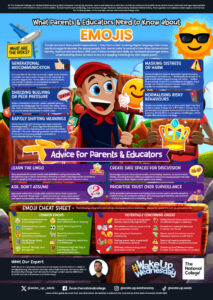Emojis aren’t just digital decoration — they’re often used as a coded language that young people use to express identity, humour and emotion. Without context, they can easily be misunderstood by adults, leading to confusion or missed signals. Some emojis may even mask risky behaviours or emotional struggles.
This guide helps decode this ever-evolving language, empowering parents and educators to have more open, informed conversations with the children in their care. It also highlights the meaning of some common emojis and offers practical tips for staying clued-in without snooping or suspicion.




